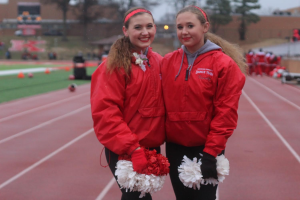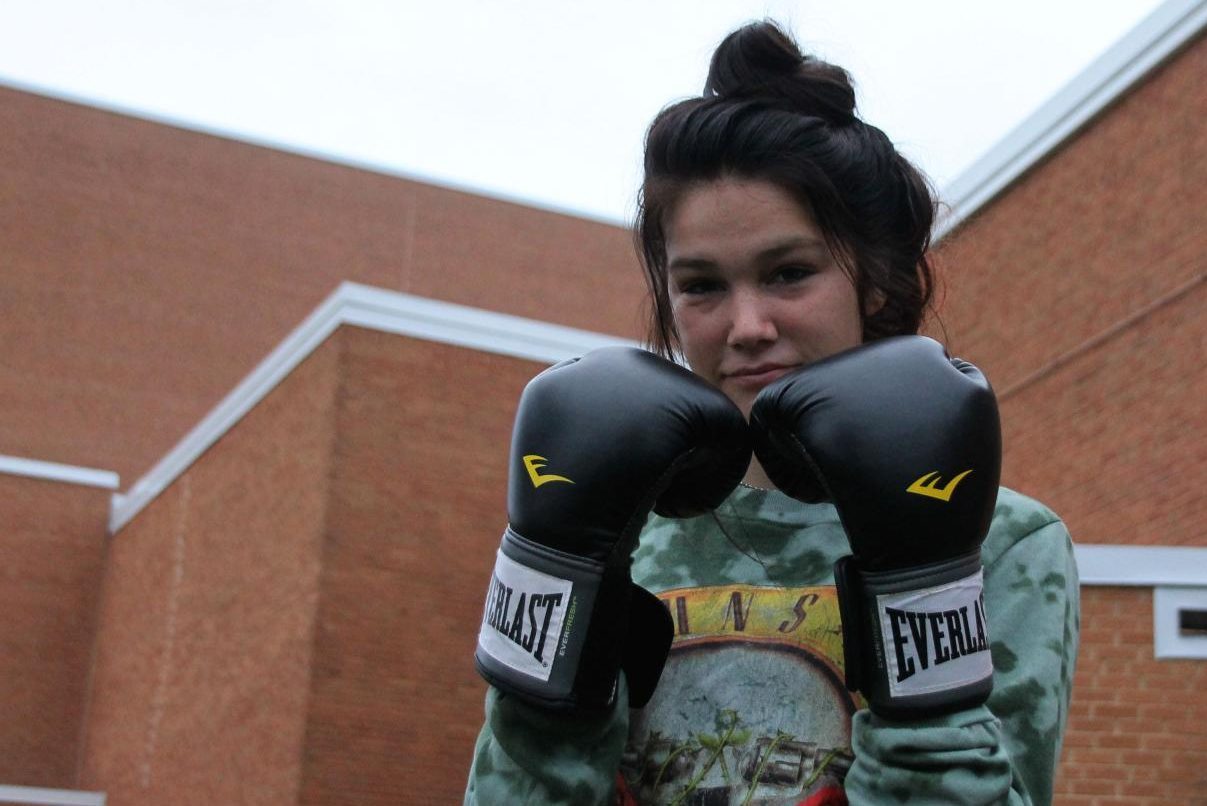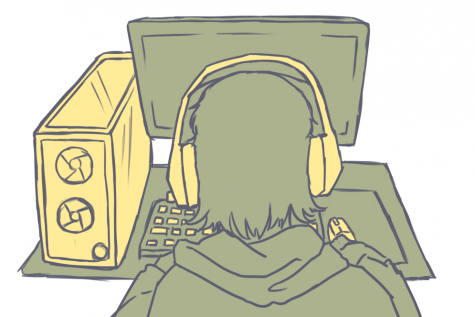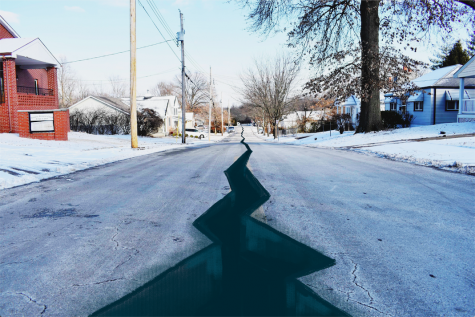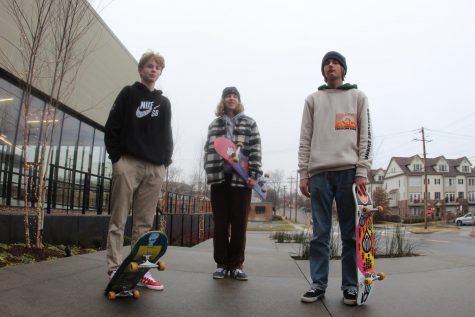Not for the money
Christine Settembrino, professional dancer, instructs dance to various KHS students.
Christine Settembrino, professional dancer and teacher, walked out the stage door. She just finished a performance. All of a sudden, she noticed a young girl wearing the biggest dress she had ever seen on a child. The little girl looked up at Settembrino, “You were amazing,” she said in awe. Her mom stood nearby, “Now she wants to take ballet class.” As Settembrino told her mom where she could get a brochure for the school and signed her name on a packet the girl received at the show, she was reminded of why she loves dance.
Settembrino, 27-year-old, is originally from New Jersey. She graduated from Princeton Ballet School and the University of Cincinnati College Conservatory of Music. Currently, she lives in St. Louis and teaches dance to various KHS students. She loves the impact she is able to have on others through dance.
“You don’t do [dance] to get a lot of money, you don’t do it to get famous, you don’t do it for the glory of a huge audience because especially depending on where you’re dancing there won’t be as many people as you hoped,” Settembrino said. “You do it because the work is great and the impact you can have on people is incredible.”
Settembrino said one of the main reasons professional dance performances do not have a big attendance is because dancers are under-valued in the United States. She said in various countries in Europe and South America dance is more valued and is a larger part of their history.
“[In the U.S.] there is an attitude generally towards the arts, that they are optional, but sports teams never seem to be,” Settembrino said. “Art is a sign of society’s progress [and] a necessary expression of the human experience. People have been making [art] since the dawn of humanity. It’s not optional.”
Settembrino started dancing when she was three-years-old and said she loved it from the start. She also said she also has natural talents that make her a good dancer like flexibility and being detail-oriented which have contributed to her love of dance.
“I get bored easily, and there is a challenge in dance that is unlike just about anything else,” Settembrino said. “It is so technically and physically depending that I love it. I love that it’s not something that you will perfect to a certain level and just walk away from it, because no one ever gets there. All of my teachers growing up [said], and I tell this to my [students] now, the day that you run out of things to work on is the day you need to retire because you’re not a dancer anymore.”
Settembrino first performed with a professional company when she was 17 years old in American Repertory Ballet’s The Nutcracker. Her first paid performance was her freshman year of college when she took part-time company jobs while enrolled in college courses. She got a full-time job before graduating. For a few years she worked as a full-time professional dancer under different contracts from ballet and contemporary ballet companies. Settembrino said that professional dancers in the U.S. are underpaid and dance companies do not get enough support from the public and government.
“The United States has an issue that the everyday person walking down the street has never been to a show that’s a ballet or being done by a contemporary company or a modern company,” Settembrino said. “There are lots of incredible dance companies in this country and very few people in the audience. And that to me is the most heartbreaking thing of all.”
According to Settembrino, many dancers do not receive health insurance and other benefits unless they are employed by a company partnered with American Guild of Musical Artists (AGMA), a dancers union, which she said are hard jobs to get. Settembrino said that she has had negative experiences while being a professional dancer like people questioning why she does it and thinking that it is a waste of time. She finds this ironic because of how much people love other forms of art in the U.S.
“[When COVID-19 started and] everybody was stressed and in need, emotionally where did you go? You put on your favorite album, you watched a new TV show, you watched recorded performances online,” Settembrino said. “I don’t think people necessarily make that connection all the time that when you’re looking for emotional comfort or ways of expression, that all these artists, not just dancers, are providing outlets for that.”
Settembrino said that professional dancers are also overworked. Their day starts with company class around 9 a.m., then six hours of rehearsal, and some companies give lunch breaks, while some don’t. She said dancers also have to squeeze in cross training either during a break, before class or after class. She said the job is over at 4 or 5 p.m., but since dancers are so underpaid many have side jobs as dance teachers or something outside of dance in the evening.
Settembrino said that a professional dancer’s career is short because they don’t have many years where their joints can handle the rigor of the sport. She said most dancers she personally knows have retired around 30-years-old.
“Even from day one, even as young as 18-years-old on your first job, [you know your] career could be over tomorrow,” Settembrino said. “If I fall, if I get dropped, if I land [on] something wrong, if something tears that’s not supposed to tear. You know from day one that [getting injured] is a risk, so you’re grateful for the time you get.”
Settembrino’s joints began to hurt so she started teaching while still taking on part-time company jobs. She stopped professional dance when COVID-19 shut down the entertainment industry. Settembrino currently teaches six days a week at Arts in Motion School of Dance and Dayspring Arts and Education. Samantha Maull, KHS junior, takes Settembrino’s ballet and pointe class at Arts in Motion School of Dance. Maull appreciates how Settembrino corrects small details.
“If a teacher doesn’t push [me and other dancers] and doesn’t point out our flaws, we just get into a rotation of the same thing and never actually fix our problems,” Maull said. “With [Settembrino] pushing us all the time in every single class, it’s so much better because we can become better dancers.”
Mya Edgar, sophomore at Francis Howell High School, is a ballet and pointe student of Settembrino. She said she appreciates the effort Settembrino makes to get to know her students, and make a positive impact on them.
“There are a lot of stigmas about being a dancer and always being flexible,” Edgar said. “Having confidence allows you to love your body [and] a huge part of dance is being comfortable in your body and using your love of your body to express it in the movements for dance. [Settembrino] has really helped me understand my placement especially, and she told us different stories in the past and things that she had to work through which really helps you understand that you’re not the only one going through [issues with body confidence].”
Settembrino said she does not consider dance to be her whole world. She said she has close friends, a fiancé and a cat. She also called herself an avid reader, nerd, lover of Dungeons and Dragons and cross word puzzles. She also got her English degree in case dance didn’t work out. However, she said she’s never regretted becoming a professional dancer.
“[Dance is] one of the greatest things you could ever do in the world,” Settembrino said. “Ballet, contemporary work as well, is one of the greatest creative expressions of humanity to have ever existed on this planet. Whether it’s a full-length story or an abstract thing, [dance is] beautiful and I wish more people would go see it.”
Your donation will support the student journalists of Kirkwood High School. Your contribution will allow us to purchase equipment and cover our annual website hosting costs.

she/her
Hobbies/interests: running, walking, friends/family, traveling, drives, sunsets
Favorite Song: "august" by Taylor Swift
Favorite Quote:...
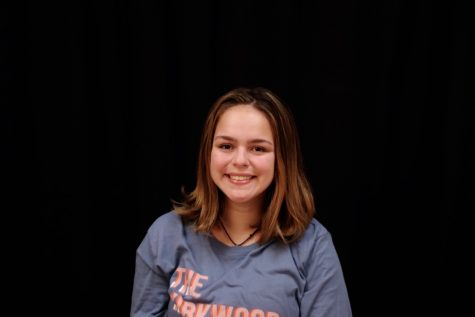
she/her
Favorite Hobbies: Art, Piano, Clarinet, Ukulele, Guitar and hanging with friends
Favorite Song: "Brown Eyed Girl," by Van Morison
Favorite...



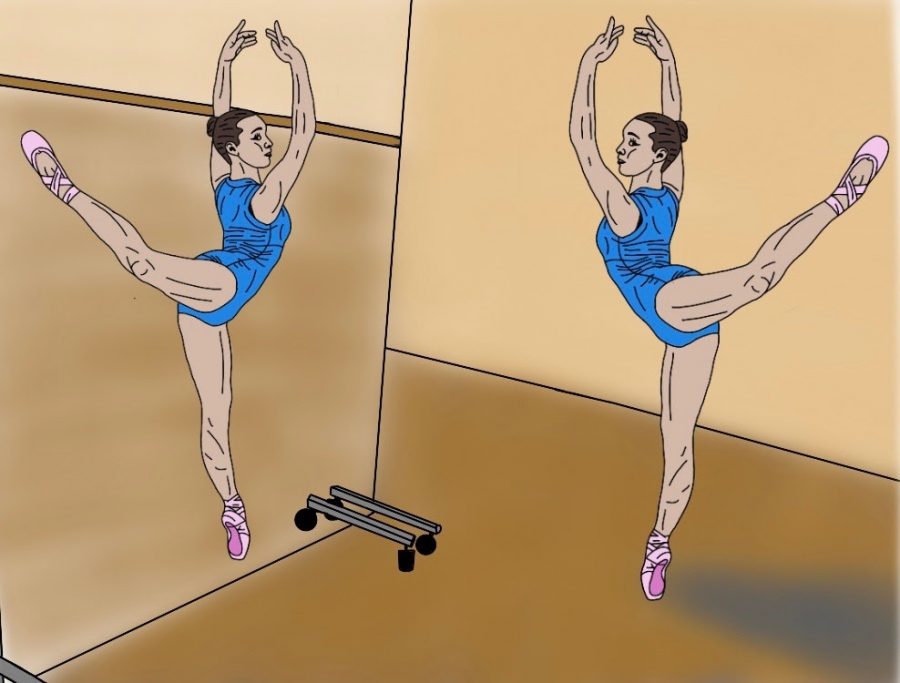
![“[Irish dance] definitely strengthens my nerves and helps calm my brain down,” Morgan Hooker, freshman, said. “I’m stressed with school too, so I can use some of the techniques that I use at dance with school. Without Irish dance I don’t think I’d be as mentally strong.”](https://www.thekirkwoodcall.com/wp-content/uploads/2019/10/IMG_9692-1-e1570585535751-300x200.jpg)
